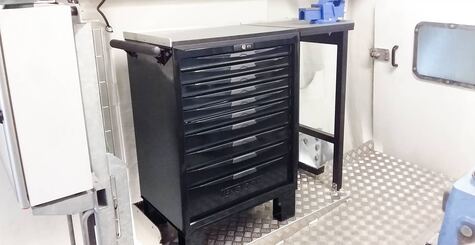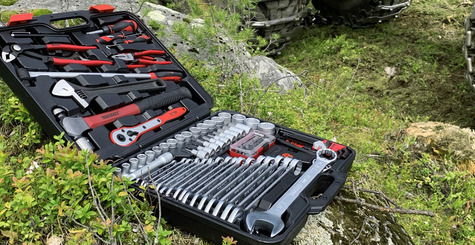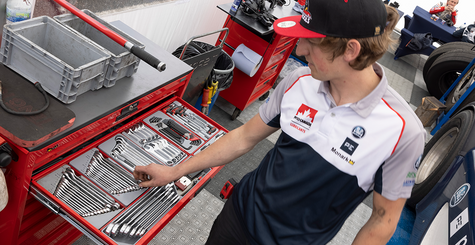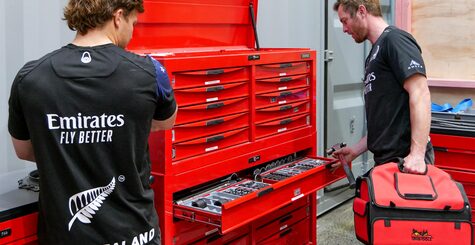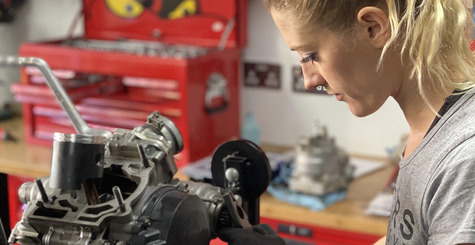
Story / 30/03/2023
Tips and hints - How to change seasonal tyres
Every car owner know the importance of being properly geared up appropriately no matter the season. Up here in the Nordics we get to enjoy not only the wonderful change of seasons, but also the changing of seasonal tyres. Many take their car to a mechanic, but why not save yourself some coin and take on the challenge yourself?
Changing your tires is no cakewalk - it requires a deft touch and meticulous attention to detail to keep you safe on the road. But fear not, we’re here to help! With our expert tips and tricks, you can change your tires like a boss, whether you're a seasoned petrolhead or a greenhorn taking your first spin in the DIY game. So without further ado, read on to learn everything you need to know to change your tires with ease and confidence.
- Before you start, do this.
- Park the vehicle on a flat surface.
- Apply the handbrake and put the gear lever in park (if the vehicle is automatic) or put it in gear (if the vehicle is manual).
- Make sure nobody is inside the vehicle.
- Place stop blocks on either side of the wheel and position them diagonally from the tyre to be changed.
- Remove the hubcap or wheel cover if present.
- Loosen the wheel nuts half a turn.
- It is a good idea to use a special wheel nut socket that has a protective plastic sleeve to avoid scratching the rim, and the sides are thinner so you can access the bolt in the rim.
- If you do not have access to an impact wrench, it is an advantage to use a breaker bar handle, so you get a lot of torque. Do not use a torque wrench for this task, you will destroy it.
- Lift the car.
- Place a jack under the car. If you are unsure where to place the jack, you can find information in the car's owner’s manual.
- Lift the car until the tyre is about 15 cm from the ground.
- Place a sturdy and approved jack stand under the car.
- Remove the wheel nuts.
- Take care of the nuts so that the threads do not get dirty, clean them.
- Remove the tyre.
- Mark the position of the tyre: VF (left front), HF (right front), and so on. Good to do if you need to rotate the tyres the next time you put them back on.
- Brush the hub from rust and dirt.
- Replace the tyre.
- If the tyres are marked as above, roll each tyre to the correct wheel hub, and lift them into place. If they are not marked, check whether the tyre has a specified direction of rotation.
- Tighten the wheel nuts.
- Only do this by hand first. Tighten the nuts crosswise.
- Lower the car.
- Tighten the wheel nuts with a torque wrench to avoid damage to the rim and nuts.
- The correct torque can be found in the car's owner's manual.
- Common torques are: M12 - 100-120Nm, M14- 100-140Nm.
- Replace the hubcap or wheel cover.
- Check the air pressure.
- Retighten the bolts after 10 miles.
Recommended tools to use:
- Wheel nut socket with plastic protection and thin walls - 9203N
- Breaker Bar handle - provides power when loosening bolts - 1201A
- Torque wrench - provides the right torque - 1292AG-EP
- Extender 125mm - 920021AN
- Approved jack that takes the weight of the car
- Approved jack stands that can handle the weight of the car
Topic in this article
Story

 Ireland
Ireland
 Australia
Australia
 Austria
Austria
 Belgium
Belgium
 Denmark
Denmark
 Estonia
Estonia
 Finland
Finland
 Germany
Germany
 Italy
Italy
 Latvia
Latvia
 Lithuania
Lithuania
 Netherlands
Netherlands
 New Zealand
New Zealand
 Norway
Norway
 Poland
Poland
 Portugal
Portugal
 South Africa
South Africa
 Spain
Spain
 Sweden
Sweden
 Taiwan
Taiwan
 United Kingdom
United Kingdom
 USA
USA



